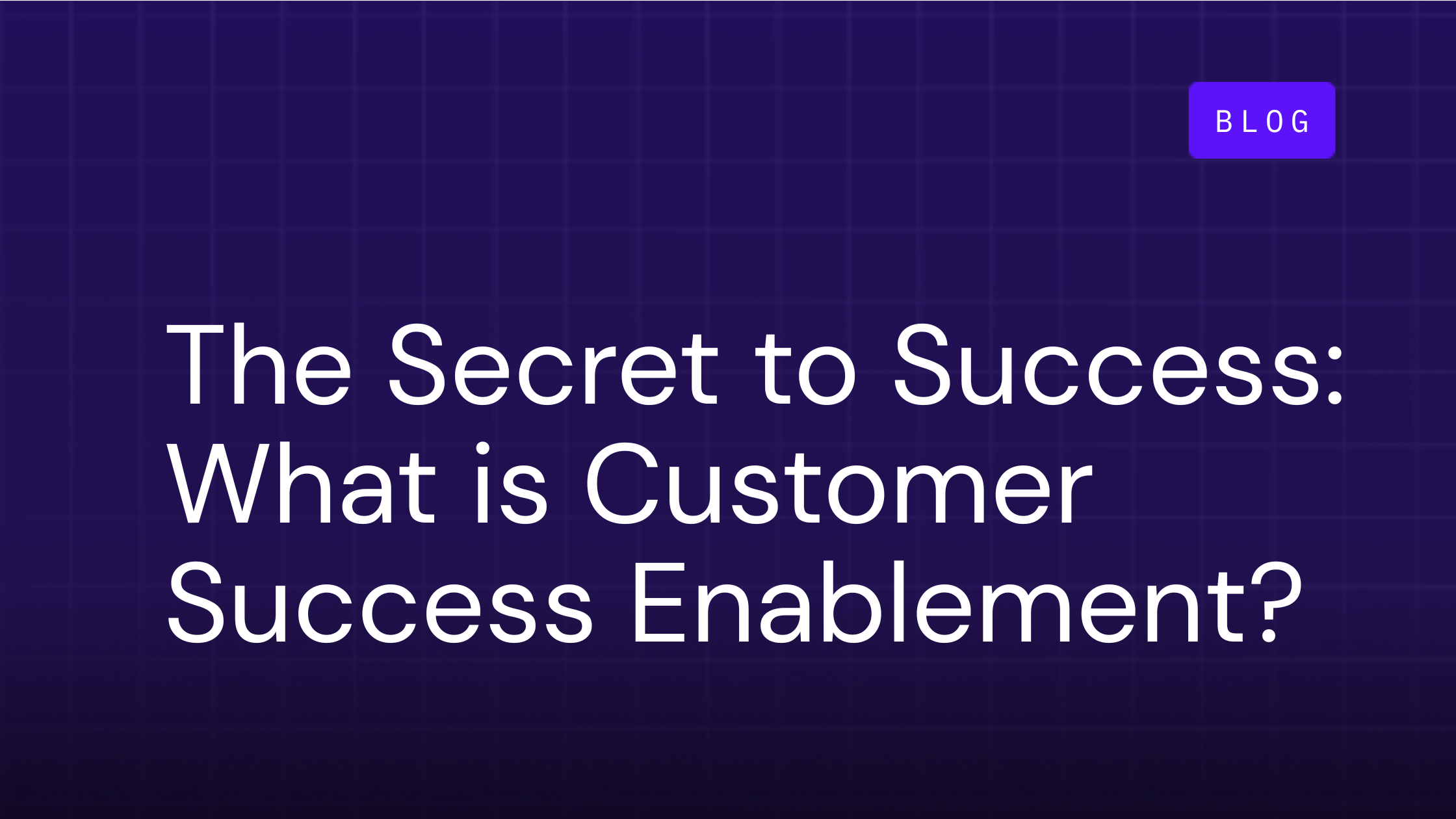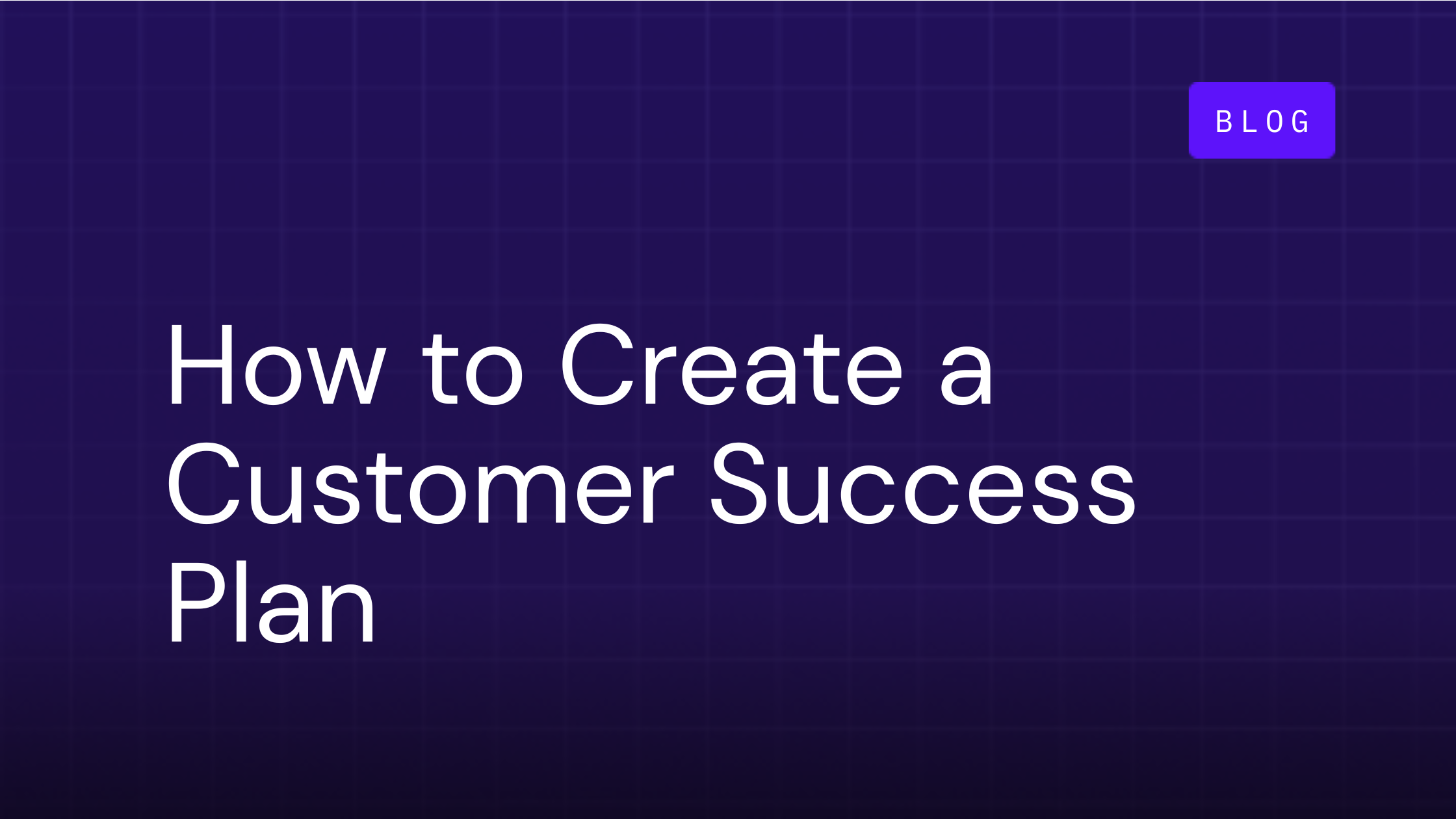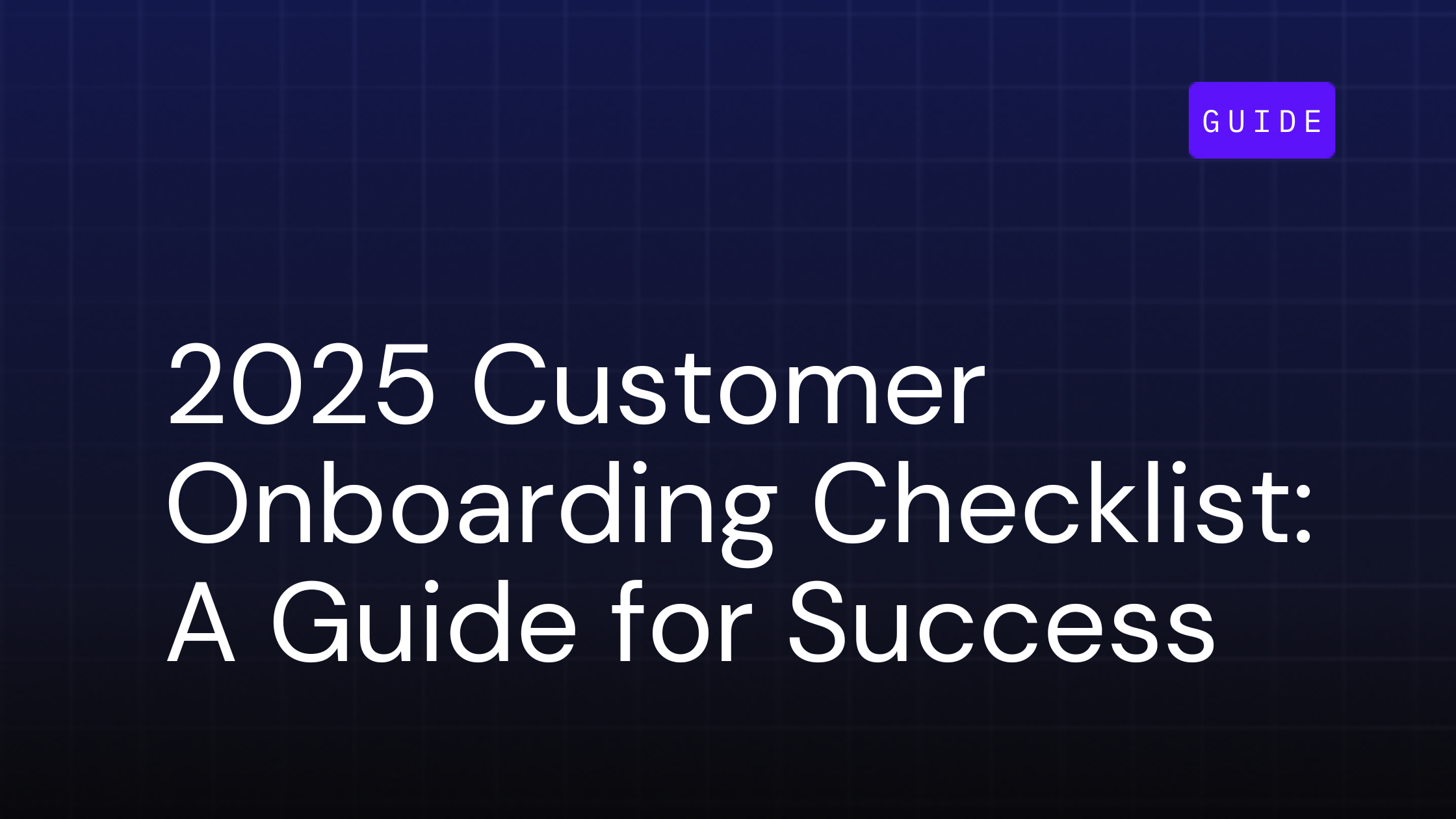The Secret to Success: What is Customer Success Enablement?
Published: April 30, 2024

Table of Contents
Closing a sale can feel like crossing a finish line. But it also marks the beginning of your efforts to retain the customer as a long-term client. 73% of consumers will switch to a competitor after more than one bad experience with a company.
It’s why successful businesses focus on customer success enablement. This article explores why customer success enablement matters. We're highlighting some actionable tips CS teams can use to leverage customer enablement best practices.
So let’s get into it.
What is Customer Success Enablement?
Customer success enablement focuses on ensuring customers have the resources, tools, and support to use your product successfully. Unlike traditional customer support, which is often reactive and addresses issues as they arise, customer success enablement is proactive. It anticipates the needs of customers and ensures they have everything required to succeed from the outset.
At its core, customer success enablement involves creating a comprehensive framework that encompasses onboarding, training, continuous support and feedback.
Customer success enablement guides customers through their entire customer journey with your product. Customer enablement tools can significantly improve customer satisfaction, reduce churn rates, and foster long-term loyalty.
Customer success enablement is about more than just solving problems. Customer enablement empowers customers to achieve their goals and get the most value possible from your product.
This proactive approach leads to happier customers and drives business growth by fostering loyalty, encouraging product adoption, and ultimately increasing customer lifetime value.
Customer Enablement Throughout the Customer Journey
Customer enablement is not a one-time effort but a continuous process that spans the entire customer journey. From prospect to onboarding into renewal, customer success enablement plays a crucial role in driving value every step of the way.
This ongoing support helps to build a strong relationship, promotes product adoption, and drives long-term success for both the customer and your company.
One of the key components of customer success enablement is effective onboarding. This initial phase is critical as it sets the tone for the customer's entire experience with your product.
A well-designed onboarding process helps customers understand the value of your product quickly and teaches them how to use it efficiently. This can involve interactive tutorials, webinars, personalized training sessions, and detailed documentation. The goal is to ensure that customers can start using your product effectively as soon as possible, minimizing any potential frustration or confusion.
Another important aspect of customer success enablement is ongoing education and support. This includes providing access to a variety of learning resources such as video tutorials, knowledge bases, and community forums.
This also involves regular check-ins and personalized support. This is to assist customers with any challenges or questions they may encounter while using your product. You can help customers use your product better and achieve their business goals by offering continuous education and support. This will enable them to fully utilize your product and be more successful in reaching their objectives.
Moreover, customer success enablement also entails gathering and acting on customer feedback. This feedback loop is essential for understanding how customers are using your product. It also enables you to identify areas for improvement, and make necessary adjustments to better meet their needs.
Actively seeking customer feedback shows you are committed to their success. It helps product teams make informed decisions that enhance the overall customer experience.
Why is Customer Success Enablement important for SaaS Companies?
Customer success enablement matters because it leads to better experiences with your products. This, in turn, should create higher levels of customer satisfaction and more loyal clients. But you’ll need the right customer success enablement strategy to enjoy those benefits.
Who’s Responsible for Customer Success Enablement?
Customer success enablement is a collective responsibility that involves various teams within a company. Customer enablement starts in primarily the responsibility of the customer onboarding or implementation team, as well as the customer success managers and account managers.
Typically, customer success team spearheads customer enablements efforts, but it truly begins in product development, sales, and marketing teams. Every team needs to set up customers for success for a customer enablement program to be truly effective.
The product team ensures that they build customer enablement into the product. The sales team transitions customers smoothly and sets realistic expectations. Marketing plays a crucial role by creating educational content and resources. The success of customer enablement depends on seamless collaboration among these departments.
The handoff from sales to customer success is a pivotal moment in the customer journey. Making sure the transition is smooth can help customers start using your product quickly and effectively. During this handoff, the sales team transfers all customer details to the customer success team. This includes their goals, pain points, and any promises made during the sales process.
A successful handoff helps the customer success team tailor their approach and provide immediate value. This will reinforce your customer’s decision in choosing your product.
Customer Learning Styles and Customer Enablement
Understanding customer learning styles is critical to effective customer enablement. Some customers prefer visual aids like videos and infographics, while others might favor detailed manuals or interactive tutorials.
Tailoring your customer enablement materials to accommodate different learning styles can significantly enhance customer engagement and retention.
Additionally, offering a variety of resources ensures that all customers can learn in a format that suits them best. Adapting to different customer learning styles increases the likelihood that they will fully utilize your product’s features.
What's the difference between Customer Enablement and Sales Enablement?
Customer enablement and sales enablement, while related, serve different purposes.
Sales enablement focuses on providing sales teams with the tools, resources, and information they need to sell more effectively. It’s about empowering your sales team to close deals and bring in new customers.
Customer enablement is giving customers the tools and information they need to do well with your product. It aims to ensure that customers can use your product effectively, leading to higher satisfaction and retention rates.
Customer Success Enablement Best Practices
Now that you understand the importance of customer success enablement, it's time to focus on your company's strategy. These tips will get you started.
Set Customers Up for Success Early
Onboarding is a core pillar of a successful customer enablement strategy. It sets the tone for your relationship with the client and helps them get value out of your product as soon as possible.
You can use onboarding platforms if you want help with creating an ideal onboarding process. Find and fix problems during the onboarding process to ensure they don't impact customers. Take action to prevent issues before they arise.
Embrace SMART Tasks
Customer support can be a significant bottleneck in the onboarding process. New clients will need constant assistance if you don’t already have a strong process in place.
It’s why SMART tasks are important. SMART stands for Specific, Measurable, Achievable, Relevant, Time-bound. It’s an organizing principle you can follow to create a more effective onboarding process that customers can complete on their own.
SMART tasks direct customers through a learning objective that is specific, measurable, achievable, relevant, and time-bound. This helps the user understand what they’re meant to learn, and how long it’s going to take and splits the overall learning goal into a more bite-sized, achievable objective. It could be the secret to reducing support wait times for new clients.
Improve Customer Visibility
Next up – focus on improving customer visibility while onboarding. You want every user to know where they stand in the overall learning journey so they can track their progress in real time.
You can also empower users to take actions based on their progress. For example, when a new client completes your foundational onboarding process, you can automatically recommend that they get started on the advanced lessons.
This practice encourages autonomy and self-sufficiency. The more visibility your customers have, the easier it will be for them to make consistent progress toward their overall learning goals.
Establish clear communication channels
Even with the best onboarding process in place, customers will still have questions they need your help answering. You want to make that as easy as possible for them so they can get their answer quickly and get back to work.
You need clear communication channels in place to make that happen. This means sharing contact information for different support people or teams in clear places and ensuring that responses go out promptly.
Regularly update and optimize the customer onboarding portal
Finally, it’s also important to note that your ideal customer onboarding portal today may not be the same tomorrow. Evolutions in how customers use your products and consume information can change your optimal onboarding setup over time.
That’s why we recommend tracking how customers use your portal over time, and then analyzing the data to find new opportunities for improvement. You can also solicit user feedback directly to get their suggestions.
Creating this type of continuous feedback loop will ensure your customer onboarding process only gets better in the long run.
Top Customer Success Enablement Tools
There are several tools available that can help with customer success enablement.
For instance, Customer Relationship Management (CRM) software like Salesforce can provide a comprehensive view of customer interactions and help tailor support.
Learning Management Systems (LMS) such as Docebo or TalentLMS can deliver training and educational content effectively.
Additionally, customer success platforms like Gainsight and Totango offer features specifically designed to monitor and enhance customer engagement and success.
The most effective would be customer onboarding platforms, specifically platforms like OnRamp with customer portals. A customer portal empowers customers to find the information they need on their own without needing your team's help.
Choosing the right tools will depend on your specific needs and the nature of your product, but investing in these technologies can greatly enhance your enablement efforts.
Unlock the Power of Customer Success Enablement with OnRamp
Customer success enablement gives clients the tools and resources they need to learn your product faster on their own time. Doing so can free up time for your team to focus on other important tasks and improve customer loyalty over time.
Customer enablement begins in onboarding which is why customer success teams use tools like OnRamp.
OnRamp is an all-in-one customer onboarding platform that specializes in customer enablement. Sign up for a demo to learn more about how we can help.
Related Posts:

How to Create a Customer Success Plan
Customer success should top the priority list for any B2B SaaS business. After all, your customers' success is your success. A...

2025 Customer Onboarding Checklist: Step-by-Step Guide for Success
Onboarding is critical for customer satisfaction and retention in the B2B space, with 50% of businesses more likely to stay loyal to...

The Guide to Customer Success for Non-SaaS Companies
We talk often about customer success for software-as-a-service (SaaS) businesses due to the recurring nature of subscription-based...